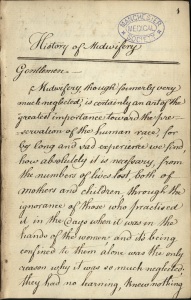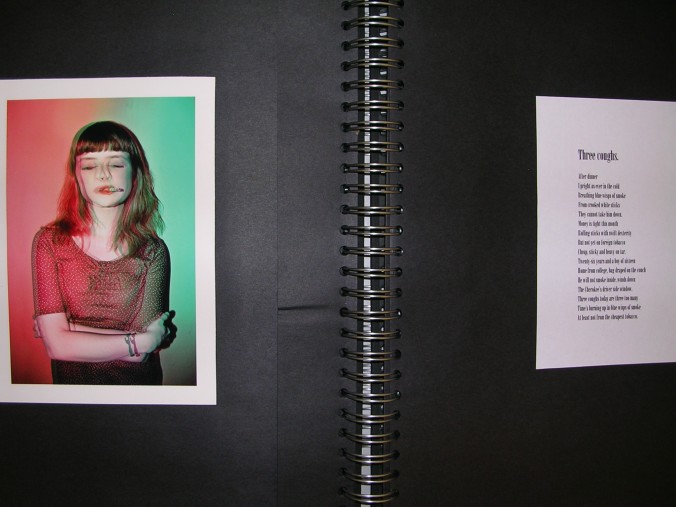Dr Sarah Collins is Senior Lecturer in Communication, Lead for Clinical Communication, Co-Director of the MSc in Medical Humanities, and Lead for Year 3 Patient-Centred Consulting at Manchester Medical School. In today’s contribution to our Meet the MedHumLab Members series, Sarah shares with us her interactive and creative approach to teaching communication to medical students.

Patrick Birch, medical student, performs a one-man play about homelessness in the Consultation Skills Learning Centre, Manchester Medical School
You are the co-director, with Carsten Timmermann, of the MSc in Medical Humanities. How do you see the role of medical humanities in medical education?
The practice of medicine is founded on the relationship between the patient and doctor. This relationship is formed and played out through the consultation. Trust, a genuine interest in the person and their everyday concerns, and an understanding of the social and medical context of their illness and disease, are key in effective, patient-centred care. To be able to understand and engage with the patient requires scientific knowledge and artistic imagination. Every individual doctor or medical student carries their own unique capacity for entering into the worlds of their patients. These acts of understanding require creative thinking, self-expression, and all the senses. In these respects, medical humanities provides a sounding board for students to appreciate the lives of their patients, and to develop their own capacities for expressing and responding to emotion, acting intuitively and with sensitivity, and learning to look after their patients, their colleagues and themselves.

Dr Sarah Collins at the opening of the Consultation Skills Learning Centre with Dame Nancy Rothwell and Professor Doug Corfield
You have designed, with a number of colleagues, the Consultation Skills Learning Centre in Stopford Building, which opened in 2012. Can you explain what makes this facility unique and how it helps students to gain confidence in communicating with patients and medical staff?
We designed the Consultation Skills Learning Centre on a principle of combining open, public areas with private spaces. This reflects the way in which health care is organized and delivered, and allows students to navigate themselves and their simulated or visiting patients through different areas of a clinic. Our design was inspired in part by my research on the geography of communication in head and neck cancer outpatients. This research has also found its way into our teaching.
We turn the Centre into ‘Stopford A&E’, for example: in which spontaneous, dramatic events as well as informal conversations happen in the corridor and waiting room; the students are suddenly called on to answer the phone; while the side rooms provide opportunities to gather clinical information, listen to patients’ stories and carry out physical examinations.
In delivering teaching, the open central areas and the more private consulting rooms allow tutors to share ideas and co-teach during a session while at the same time delivering their own teaching to students in a side room. We have ‘acoustic curtains’ to close off the private space – thick curtains which block out sound (and which are therefore more effective than hospital curtains) – but which can also be opened to provide for all the ‘patients’ and the teaching and learning activities to be open and seen.
As the winner of a Teaching Excellence Award in 2012/13, can you tell us a bit more about your approach to teaching communication skills to medical students?
My approach to teaching communication is student-centred, creative (drawing on different theories and concepts and applying these in imaginative and new ways) and multidisciplinary. Although ‘communication skills’ is the standard term used to describe what students need to be able to practise effective communication with their patients, there is of course more to this than ‘skills’ – it is also knowledge, attitude, intuition, reflection. We use the terms ‘consultation’ and ‘patient-centred consulting’ to reflect the broad array of influences and dimensions that all come into play in an interaction between an individual patient and the doctor or medical student.
I make a point of learning all the students’ names and remembering details about their lives. The relationship with students in teaching is essential in order to foster open discussion and critical thinking. I involve the students’ ideas and contributions in our curriculum – for example, students have written dramatic dialogues which we now perform on a regular basis for all students, e.g. ‘In the Waiting Room’ in our session ‘Mental Health Stories’. For ‘Stopford A&E’, I asked final year students to write the session, and they now teach this session each year to the second year students, with support from my clinician colleagues. And I draw on different media – spoken, written, visual, art, photography, music – to set the scene for an individual session or to create an interlude within it for everyone to share thoughts and ideas.

Music, Literature, Art and Medicine: an evening of performances by medical students at the Anthony Burgess Foundation, November 2015
How does your interdisciplinary background in languages and linguistics, communication, social science and education, and creative writing inform your teaching?
I use my interdisciplinary background to create the content and form for every session I design: the combination of disciplines allows us to represent the consultation and the doctor-patient relationship in its multiple and diverse forms. In terms of teaching and learning activities, we incorporate drawing, listening to music, creative writing of dialogue and narrative, ethnographic observation of clinical settings, and discussions about educational methods, into both tutor development and student learning.

Creative approaches to teaching and learning communication: Sarah and colleagues at the International Conference for the European Association of Communication in Healthcare, Heidelberg, September 2016
And finally, how do you relax and unwind away from the office, CSLC, lecture theatre and seminar room?
I love cooking, gardening, writing poetry, wandering around art galleries, walking long distances, going to the cinema, and most of all spending time with my family.














